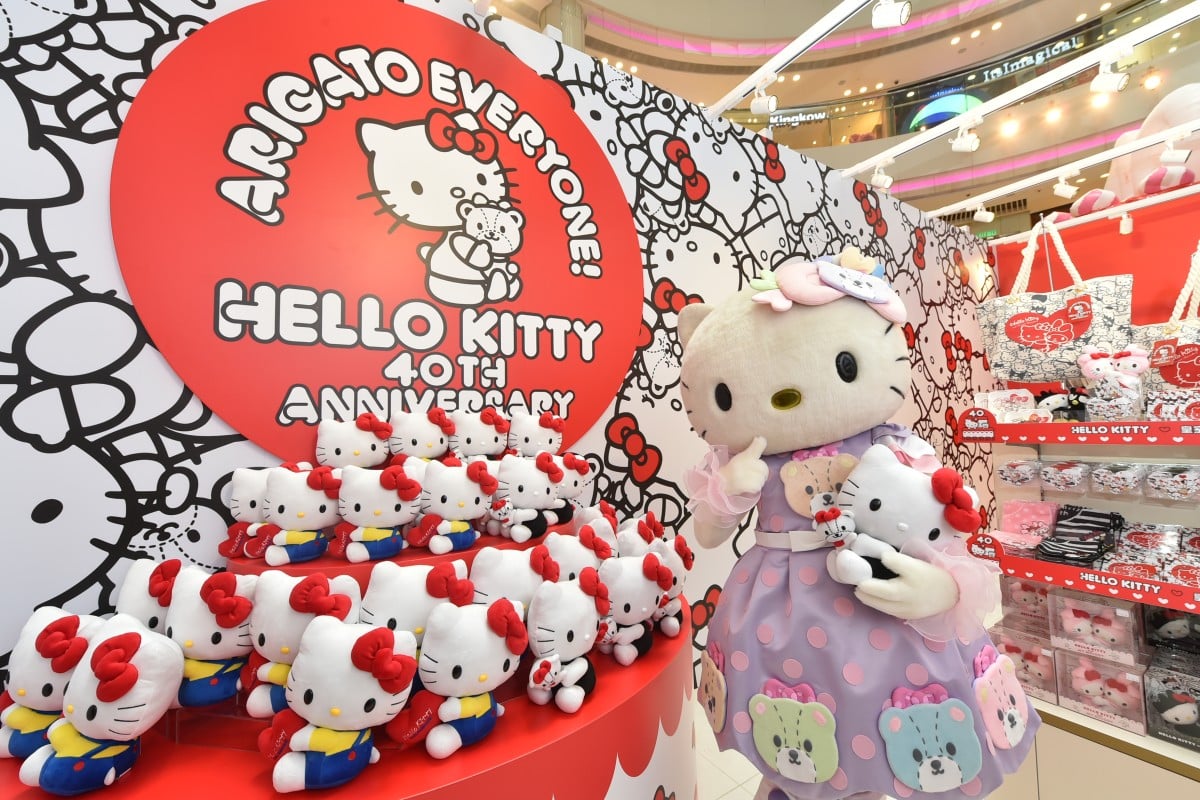
Forty years ago, Japanese company Sanrio was looking for its first animal character. Several bears already roamed the market, and there was a dog named Snoopy. So the product-design company decided on a feline. And so, Hello Kitty was born.
Today, the cute cat with the missing mouth is a global superstar, the most popular of Sanrio's cartoon cast - which also includes a frog, a penguin and hamster, among others.
Known as Hello Kitty and Friends, the characters earned a combined 74 billion yen (HK$5.7 billion) for the company last year.
"Hello Kitty has become a part of life," says Caroline Tsang Shui-kwan, Sanrio Hong Kong's chief operating officer for Asia. She adds that handling a character as famous as Hello Kitty is like managing an actual movie star.
"What I do is similar to what a manager does for a star," Tsang says. "We need to be selective about her jobs, and be innovative from time to time to keep fans interested."
Hello Kitty debuted in Japan in 1974, wearing a navy blue jumpsuit and sitting upright in a coin purse. Two years later, she stood on her paws for the first time. Four years later, she collected more clothes in her wardrobe and adopted different looks.
Since then, she has become even more trendy and fashion-conscious. She sported a tan and wore a big flower on her head when the alternative Ganguro trend hit Japan in the 1990s.
Then she got a boyfriend, Dear Daniel, coinciding with the announcement of a high-profile celebrity marriage in Japan.
But Tsang says one of the biggest secrets of Hello Kitty's success lies in her design. Hello Kitty doesn't have a mouth, which means people can interpret the cat's emotions based on their own, Tsang says. "They find the cat to be happy when they are happy, or sad when they are sad."
That allowed the cat to appear anywhere - from 2D designs on stationery and Eva Air jets, to 3D Hello Kitty impersonators in commercials and events. There is only one rule: Hello Kitty will not do anything that might upset sensitive people, such as holding a gun or drinking alcohol.
While Sanrio specialises in the kawaii (cute) side of Japanese culture, Tsang says Hello Kitty sometimes transcends that, like when she takes the deck for a spin at the club.
"People love a cool Kitty DJ," she says.
Still, the digitalisation of our world has brought challenges. Previously popular products such as letterheads and photo albums are no longer trendy, and people increasingly buy things online instead of visiting physical stores.
But Sanrio upholds the idea that gifts form a special part of friendships and relationships, and the best way to get them is by browsing the stores.
"When Shintaro Tsuji founded Sanrio 55 years ago, he believed people needed communication ... and that their affection could be expressed through small gifts," Tsang says.
With overseas markets sluggish now, the mainland will be the focus for Sanrio's development. The brand is still relatively young there, having entered the mainland's market in 2003.
Still, Hello Kitty is not going to forget her fans in Hong Kong. In fact, she's celebrating her 40th birthday here, with an anniversary exhibition at the Windsor House in Causeway Bay that began yesterday. If you want to give her a birthday hug, Hello Kitty will be available every weekend this month and next month in a "hugathon".
